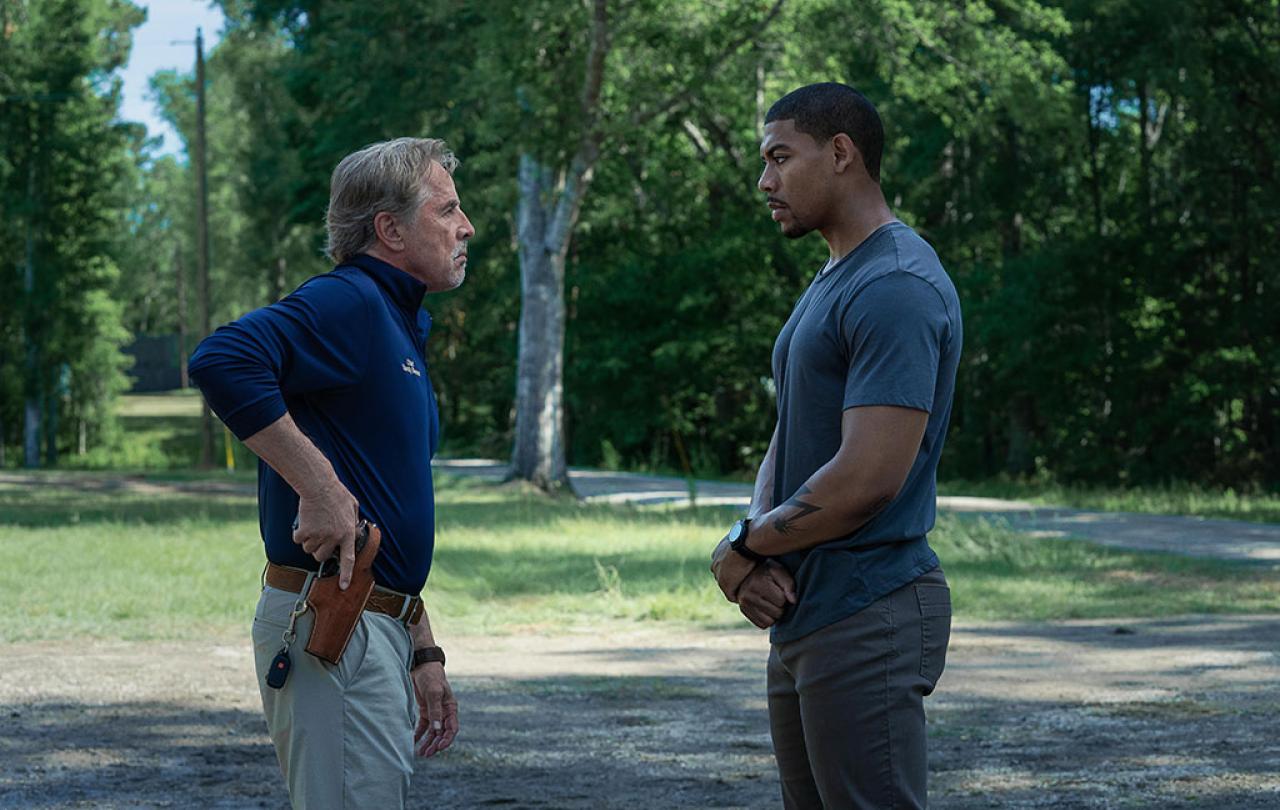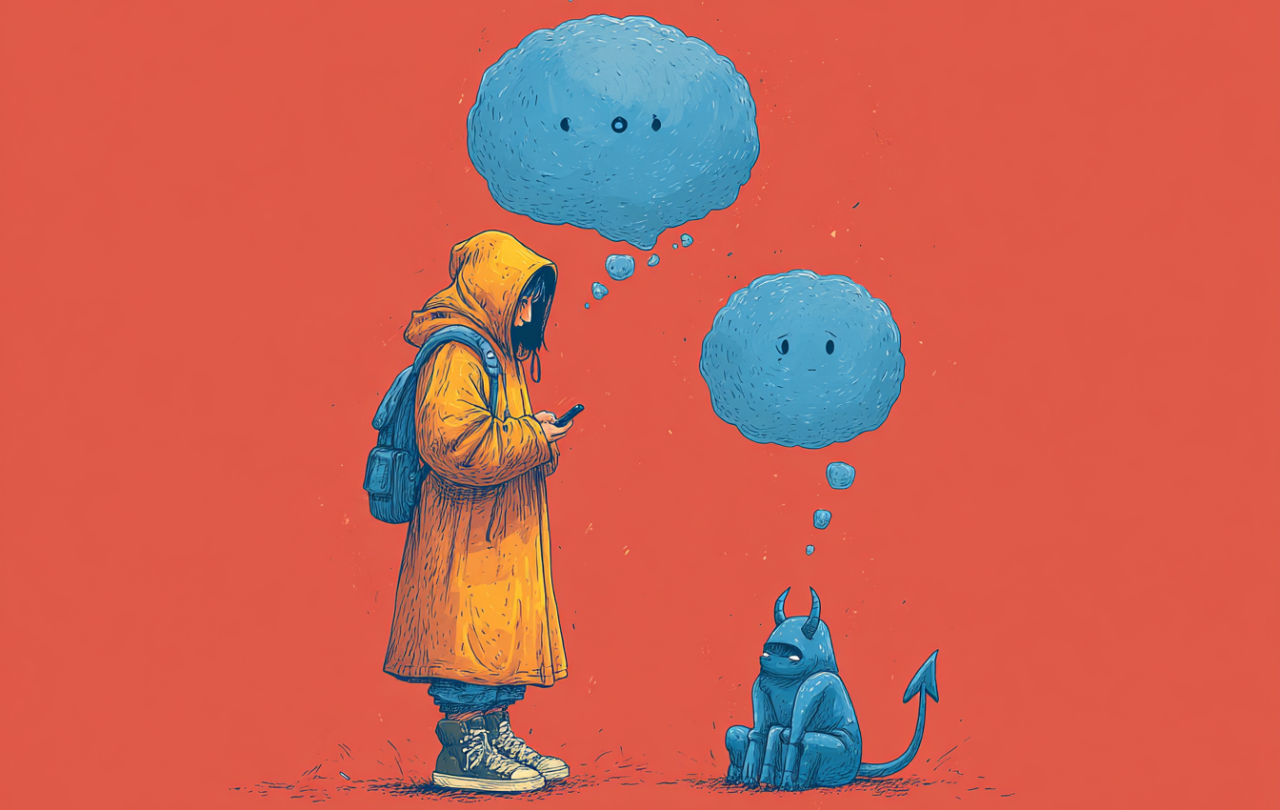
I wasn’t expecting to emotionally connect with this straight-to-Netflix action movie but Rebel Ridge is not a normal action film. It may be sitting at the number one position on the Netflix film charts, with its echoes of a classic Jack-Reacher-style thriller, but where it surprises and stands apart is in its challenging and nuanced handling of race, violence and corruption.
Race
Like Lee Child’s character Jack Reacher, Terry Richmond played by Aaron Pierre is a former US military officer. He is a private person, self-confident, respectful, comfortable with his own company and willing to go the extra mile to help a cousin who has got himself in a mess. Despite his lowly job in a restaurant, Terry happens to have financial means as well as expert survival and hand-to-hand combat skills. He is also Black.
The opening sequence shows Terry cycling into a small town when he is accosted by two local – white - police officers. Suddenly the dynamic changes. The determined, self-confident, resourceful man becomes the downtrodden object of a series of abuses and injustices. Terry tries everything to deescalate the problem, without success. Nevertheless, he remains polite, referring always to the officers who deal with him as “Sir”, and finding things to thank them for.
I found myself relating to this, remembering times that I have had to deal with abusive power and hoping that if I remain calm, polite and respectful, I could win the other side over. Some have called this “respectability politics” – the pressure on marginalized groups, particularly Black people, to behave in a manner that aligns with dominant cultural norms - including being overly-polite or restrained - especially in the face of abusive power or injustice. Another term for this is "code-switching," where minority groups feel the need to adjust behaviour, language, or appearance to fit into a different cultural context, often in response to systemic power imbalances.
Terry tries everything to get out of his situation with minimum disruption. But things deteriorate so far so quickly that Terry realises that nothing he can say or do will allow him to extricate himself. Cornered in this way, he is forced to pursue justice by other means.
It is hard not to see this film without remembering the death of George Floyd. That terrible incident in May 2020 highlighted racial disparities in policing in the US: 13 per cent of the American population is Black, yet they account for about 25-28 per cent of police killings each year. According to the Mapping Police Violence project, Black people are up to three times more likely to be killed by police than white people - between 2013 and 2022, about 7,000 Black Americans were killed by police.
The UK’s police services have had to admit to similar disparities. Black people are seven times more likely to be stopped and searched compared to white people in England and Wales. In London, where stop-and-search powers are more frequently used, Black individuals make up around a third of all stop and searches, despite representing about 13 per cent of the city's population. From arresting, handcuffing, the use of taser, remanding in custody and more, data shows that racial disparities are evident across the service. These disparities undermine trust in the police service, which in turn can inhibit the cooperation and information sharing needed to reduce crime and protect citizens.
The racial tensions that permeate the movie give viewers a glimpse into what it is like to be mistrustful of those who are supposed to help and serve us. As such it is a masterpiece in raising awareness of racism wherever it is experienced, and the fear and injustice that go with it.
Violence
Terry is huge, athletic and highly skilled. Like most movies of this genre, I was expecting the protagonist to be pushed to breaking point, thereby unleashing a wave of violence so severe and overwhelming that he becomes an unstoppable killing machine.
In Taken, Bryan Mills, played by Liam Neeson, kills almost 100 people, mainly of Albanian nationality, by gunfire, strangulation and electrocution, on his quest to protect his family. In the more recent John Wick series of films, Wick, played by Keanu Reeves, a retired assassin, kills over 400 people in a wave of violence initiated by the theft of a car and the killing of a puppy.
But Rebel Ridge is different. A key thread in the movie is the use of Escalation of Force–Non-Lethal Effects (EoF-NLE), meaning the use of verbal warnings, warning shots, non-lethal explosives and physical restraint tools like tasers or pepper spray that are supposed to minimise the risk of injury and death. In the film, the corrupt police officers have not only illegally raised money to buy this equipment they have also profited from renting out their EoF-NLE to third parties.
Terry shows himself to be a different kind of hero, with a stronger moral compass than the police service as he uses their own EoF-NLE against them. On one occasion we watch as he loads and racks his gun, only to use it in self-defence. He is an avenging angel unleashed who refuses to kill people. There are plenty of showdowns, but the final total body count is one.
Corruption
Many action movies, Taken and John Wick included, contain little social commentary. Rebel Ridge, on the other hand, is prepared to tackle some significant social issues. The corruption around EoF-NLE and militarisation of local police forces is one example. The other questionable practice that gets much discussion is “civil asset forfeiture” - an anti-drug regulation that allows a police officer to seize cash and other valuables with no due process. Both issues as portrayed in this film highlight the wider question of accountability of policing, as well as the potential for corruption that comes with its absence.
Indeed, it's not just about ‘bent coppers’ – the whole justice system is shown to be at risk in this film. The local judge is implicated in the corruption, and the state prison, as expected, fails to protect. The impact is pervasive. We see a conflicted black female police officer, a court worker struggling to get court support, and many others who stand idly by because they don’t seem to know what is right or good anymore.
At a time when trust in public bodies is at an all-time low – this film, despite its non-violent and subversive tropes, presents to us a heroic rebel with a higher moral compass who goes against the flow and pushes back against the system to try and fix things. It may not restore faith in our society’s institutions – but perhaps it does restore faith in something else.
Although the director, Jeremy Saulnier, claims Rebel Ridge was not based on a true story, I cannot help thinking of a true story that might have inspired it. I am reminded of Jesus Christ, the most famous rebel in history, who was killed in a showdown on a ridge outside Jerusalem for speaking out – lashing out even - against the corruption in the religious institutions of his time, for taking an anti-racist stance, and for living in a way that went against the flow. It reminds me of the lengths he went to get those he loved freed from the mess they had gotten themselves into, and the price he paid to try and save them from certain death. Like Rebel Ridge, the ending to that story remains open: who will take up the call and will true justice ever be served?





